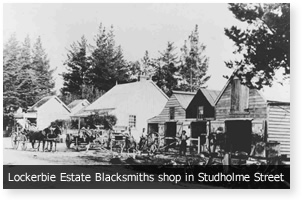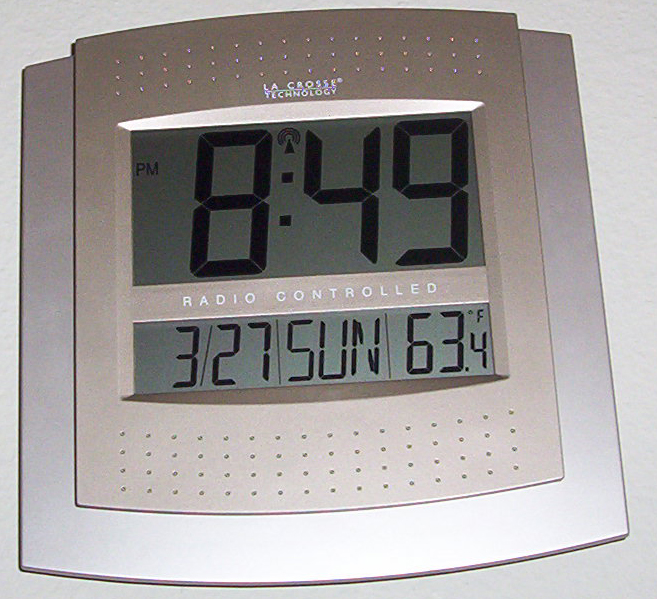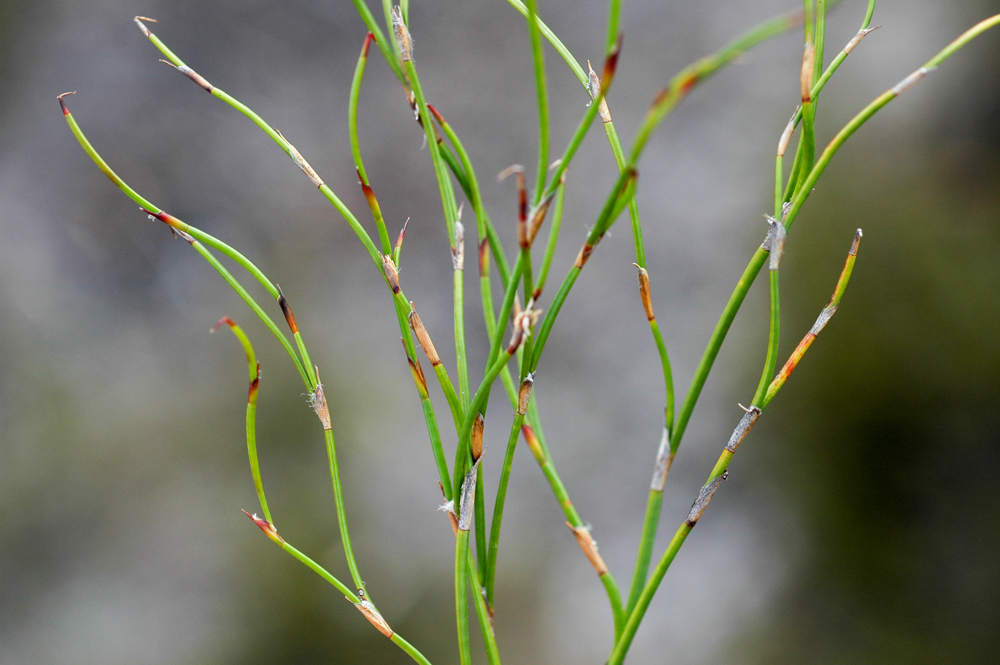|
Motumaoho
Motumaoho is a small village in the Waikato region of New Zealand's North Island, just to the west of the Pakaroa Range. It is on SH26, east of Hamilton and west of Morrinsville. The village is bordered by the Waitakaruru Stream to the east. Motumaoho can be translated as an intruding clump of trees. It once had a cheese factory, post office, railway station and garage, but now has only greenhouses, a school and houses. A hall was open at least from 1917 to 1928. History The area was sparsely occupied by Ngāti Werewere of Ngāti Hauā. The nearest known archaeological site is just over the confiscation line and county boundary, about 5km towards Eureka, where a ringditch pā, Mangao Tupua, is on a small knoll at the foot of the Pakaroa Range. Some early European traders are believed to have traversed the district prior to 1834, when the missionary, John Morgan, travelled up the Piako River and crossed to Horotiu. The 1860s saw an influx of European settlers to the ... [...More Info...] [...Related Items...] OR: [Wikipedia] [Google] [Baidu] |
Morrinsville
Morrinsville is a provincial town in the Waikato region of New Zealand's North Island, with an estimated population of as of The town is located at the northern base of the Pakaroa Range, and on the south-western fringe of the Hauraki Plains. Morrinsville is around 33 kilometres east of Hamilton and 22 kilometres west of Te Aroha. The town is bordered by the Piako River to the east and the Waitakaruru Stream to the south. History and Culture Pre-European settlement Prior to European settlement of New Zealand, the hills around present-day Morrinsville were occupied by the Ngati Werewere Māori people of the Ngati Haua Iwi, and the site of the present-day town was on or near to an old Māori route between the upper Waihou-Piako basin and the Ngāruawāhia area. Following European settlement, some early European traders are believed to have traversed this route prior to 1834 when the Rev. J. Morgan travelled up the Piako River to near the future town site and crossed w ... [...More Info...] [...Related Items...] OR: [Wikipedia] [Google] [Baidu] |
Eureka, New Zealand
Eureka is a rural settlement in the Waikato District and Waikato region of New Zealand's North Island. It is located on State Highway 26, and is surrounded by dairy farmland on a flat plain. There are various explanations for the name. One story suggests William Steele rode out with a syndicate looking for a headquarters, and exclaimed "Eureka I have found it" when he reached the hilltop. Another story suggests "Eureka" is an abbreviation of the first names of the women in the syndicate. The settlement has a war memorial, listing local men who died in World War I and World War II. History Eureka is on the former Piako Swamp, described in 1876 as deep. Following the invasion of the Waikato, it was part of the area confiscated from Ngāti Hauā in 1864. Captain William Steele, who brought militia-settlers from Sydney to Hamilton in 1864, persuaded Thomas Russell and Frederick Whitaker to form a company to buy land and drain it. In 1874 the government sold the Eureka Est ... [...More Info...] [...Related Items...] OR: [Wikipedia] [Google] [Baidu] |
Waitakaruru Stream
The Waitakaruru Stream is a major tributary of the Piako River, within the Waikato region of New Zealand's North Island. It should not be confused with the similarly named Waitakaruru River, which is also in the Waikato Region. The Waitakaruru Stream has its origin in the Te Miro-Tahuroa Hills south of Morrinsville, within the Waikato District. Initially the stream flows south and south-west through Scotsman's Valley before turning northwards at Tauwhare flowing roughly parallel to the Pakaroa Range as it passes the boundary of Eureka before entering the Matamata-Piako District. The stream passes through the settlement of Motumaoho, progressively turning a more easterly direction towards Morrinsville, where it has a walkway beside it and converges with the larger Piako River on southern outskirts of the town. The stream catchment is highly modified by agriculture, ranging from sheep, beef and dairy farming. Parts of the middle catchment are prone to minor flooding due to ... [...More Info...] [...Related Items...] OR: [Wikipedia] [Google] [Baidu] |
Matamata-Piako District
Matamata-Piako District is a local government area in the Waikato region of New Zealand. It lies to the east of the city of Hamilton. Geography The district encompasses the southern end of the Hauraki Plains and much of the Thames Valley, and is bounded in the east by the Kaimai Range. The rivers Piako and Waihou run through the district. The towns of Matamata, Morrinsville and Te Aroha are all within the district, with the Council's head office based in Te Aroha. The main industry in the region is dairy farming and Thoroughbred breeding and training. Other communities in the district include Mangateparu and Waitoa. Populated places Matamata-Piako District consists of the following towns, localities, settlements and communities: * Matamata Ward: ** Buckland ** Gordon ** Hinuera ** Matai ** Matamata ** Okauia South ** Okauia ** Paratu ** Peria ** Piarere ** Richmond Downs ** Selwyn ** Taihoa ** Tamihana ** Te Poi ** Turangaomoana ** '' Waharoa'' ** ... [...More Info...] [...Related Items...] OR: [Wikipedia] [Google] [Baidu] |
Ngāti Hauā
Ngāti Hauā is a Māori iwi of the eastern Waikato of New Zealand. It is part of the Tainui confederation. Its traditional area includes Matamata, Cambridge, Maungakawa, the Horotiu district along the Waikato River and the Maungatautari district, and its eastern boundary is the Kaimai Range. Leaders of the tribe have included Te Waharoa (1820s and 1830s), his son Wiremu Tamihana (1840s to 1860s) and Tamihana's son Tupu Taingakawa. The tribe has played a prominent role in the Māori King Movement, with Tamihana and descendants being known as the "Kingmakers". Rohe The Ngāti Hauā Iwi Trust board established their rohe as the central Waikato region with the approximate boundaries running from Mount Te Aroha in the northeast down to Mount Maungatautari in the southeast, along a line south of Cambridge to about 8 km west of the Waikato River, then along a line parallel to, but west of, the Waikato river to the south edge of the Taupiri Gorge. This includes t ... [...More Info...] [...Related Items...] OR: [Wikipedia] [Google] [Baidu] |
Time In New Zealand
Time in New Zealand is divided by law into two standard time zones. The main islands use New Zealand Standard Time (NZST), 12 hours in advance of Coordinated Universal Time (UTC) / military M (Mike), while the outlying Chatham Islands use Chatham Standard Time (CHAST), 12 hours 45 minutes in advance of UTC / military M^ (Mike-Three). During summer months – from the last Sunday in September until the first Sunday in April – daylight saving time is observed and clocks are advanced one hour. New Zealand Daylight Time (NZDT) is 13 hours ahead of UTC, and Chatham Daylight Time (CHADT) 13 hours 45 minutes ahead. New Zealand's associated states – the Cook Islands and Niue – and the dependent territory of Tokelau use several different time zones at their own discretion. History On 2 November 1868, New Zealand officially adopted a standard time to be observed nationally, and was the first country to do so, about fifteen years before any other. Chatham Island was 45 minutes ah ... [...More Info...] [...Related Items...] OR: [Wikipedia] [Google] [Baidu] |
Navvy
Navvy, a clipping of navigator ( UK) or navigational engineer ( US), is particularly applied to describe the manual labourers working on major civil engineering projects and occasionally (in North America) to refer to mechanical shovels and earth moving machinery. The term was coined in the late 18th century in Great Britain when numerous canals were being built, which were also sometimes known as "navigations", or "eternal navigations", intended to last forever. Nationalities A study of 19th-century British railway contracts by David Brooke, coinciding with census returns, conclusively demonstrates that the great majority of navvies in Britain were English. He also states that "only the ubiquitous Irish can be regarded as a truly international force in railway construction,"Brooke (1983). Page 167. but the Irish were only about 30% of the navvies. By 1818, high wages in North America attracted many Irish workers to become a major part of the workforce on the construction of t ... [...More Info...] [...Related Items...] OR: [Wikipedia] [Google] [Baidu] |
Sporadanthus Ferrugineus
''Sporadanthus ferrugineus'', the bamboo rush or giant wire rush, is a restiad plant endemic to the northern North Island of New Zealand. Taxonomy It was long considered that ''Sporadanthus'' plants in the North Island were the same species as '' Sporadanthus traversii'', which is native to Chatham Island, east of the New Zealand mainland. The North Island plants were described as the separate species ''S. ferrugineus'' in 1999, with ''S. traversii'' becoming regarded as endemic to Chatham Island. Distribution ''S. ferrugineus'' grows in acidic, ombrotrophic, restiad-dominated raised bogs. Draining of such bogs for farming in the northern North Island has greatly reduced their extent. ''S. ferrugineus'' is now mainly found at the peat domes of Kopuatai and Torehape on the Hauraki Plains and Moanatuatua Swamp in the Waikato basin. Biology ''S. ferrugineus'' is the only known food source for the moth '' Houdinia flexilissima''. Conservation Under the New Zealand Threat Cl ... [...More Info...] [...Related Items...] OR: [Wikipedia] [Google] [Baidu] |
Empodisma Minus
''Empodisma minus'', commonly known as (lesser) wire rush or spreading rope-rush, is a perennial evergreen belonging to the southern-hemisphere family of monocotyledons called the Restionaceae. The Latin name ''Empodisma minus'' translates to “tangle-foot” “small”. ''E. minus'' is found from Queensland to South Australia, Tasmania and throughout New Zealand south of 38 ° latitude, or the central north island. Its current conservation status is “Least concerned”. In 2012 the new species ''Empodisma robustum'' was described in New Zealand, with what was previously described as ''E. minus'' from the lowland raised bogs of Waikato and Northland now being re-classified as ''E. robustum''. ''E. minus'' remains an important peatformer in the south of New Zealand and in high altitude peatlands. Description The stems are 15–200 cm long, numerously branched, semi-terete and dark green to dark brown in colour. The stem keeps upright when short, yet becomes procumbent whe ... [...More Info...] [...Related Items...] OR: [Wikipedia] [Google] [Baidu] |
Moanatuatua Scientific Reserve
Moanatuatua scientific reserve is a 140 ha remnant of restiad ( Restionaceae) peatland in the North Island of New Zealand. The bog was formerly ~ 7500 ha in size and was one of several large peatlands surrounding the city of Hamilton. Widespread drainage and conversion to agriculture has left only this small remnant of what was formerly the dominant ecosystem in the area. Moanatuatua is the best studied peatland in New Zealand, with research commencing in 1917 and at least 40 separate investigations during the next 100 years. The site is of international interest with research being carried out by scientists based in the UK and Canada as well as locally in New Zealand. The peat contains well-preserved pollen grains and plant remains dating back 14,000 years, making the site an important palaeoclimatic record for New Zealand and the south pacific. Conservation value Moanatuatua is one of the only three known sites to contain the rare rush-like plant ''Sporadanthus ferrugine ... [...More Info...] [...Related Items...] OR: [Wikipedia] [Google] [Baidu] |
Horotiu
Horotiu is a small township on the west bank of the Waikato River in the Waikato District of New Zealand. It is on the Waikato Plains north of Hamilton and south of Ngāruawāhia. From early in the 20th century it developed around a freezing works and other industries. The North Island Main Trunk railway runs through the town, as did State Highway 1 until opening of part of the Waikato Expressway in 2013. An hourly bus runs between Huntly and Hamilton. Name The name, Horotiu, seems to have been used interchangeably with Waikato River, or Pukete. Its first use for the current township seems to occur in 1864, shortly after the invasion of the Waikato. Until then, Horotiu was the name of the upper Waikato river, where its current became faster and of Horotiu pā, on its banks, near Cambridge. An 1858 map only shows the name as Horotiu Plains in the area near the pā. The name, Horotiu, for the Waikato River, upstream from Ngāruawāhia, seems to have remained in use until the ... [...More Info...] [...Related Items...] OR: [Wikipedia] [Google] [Baidu] |
Fonterra
Fonterra Co-operative Group Limited is a New Zealand multinational publicly traded dairy co-operative owned by around 9,000 New Zealand farmers. The company is responsible for approximately 30% of the world's dairy exports and with revenue exceeding NZ $22 billion, making it New Zealand's largest company. It is the sixth-largest dairy company in the world as of 2022, as well as the largest in the Southern Hemisphere. Fonterra was established in October 2001 following the merger of the country's two largest dairy co-operatives, New Zealand Dairy Group and Kiwi Cooperative Dairies, with the New Zealand Dairy Board. The name Fonterra comes from Latin , meaning " spring from the land". History In New Zealand, as in most Western countries, dairy co-operatives have long been the main organisational structure in the industry. The first dairy co-operative was established in Otago in 1871. By 1920, there were 600 dairy processing factories of which about 85% were owned by co-op ... [...More Info...] [...Related Items...] OR: [Wikipedia] [Google] [Baidu] |









